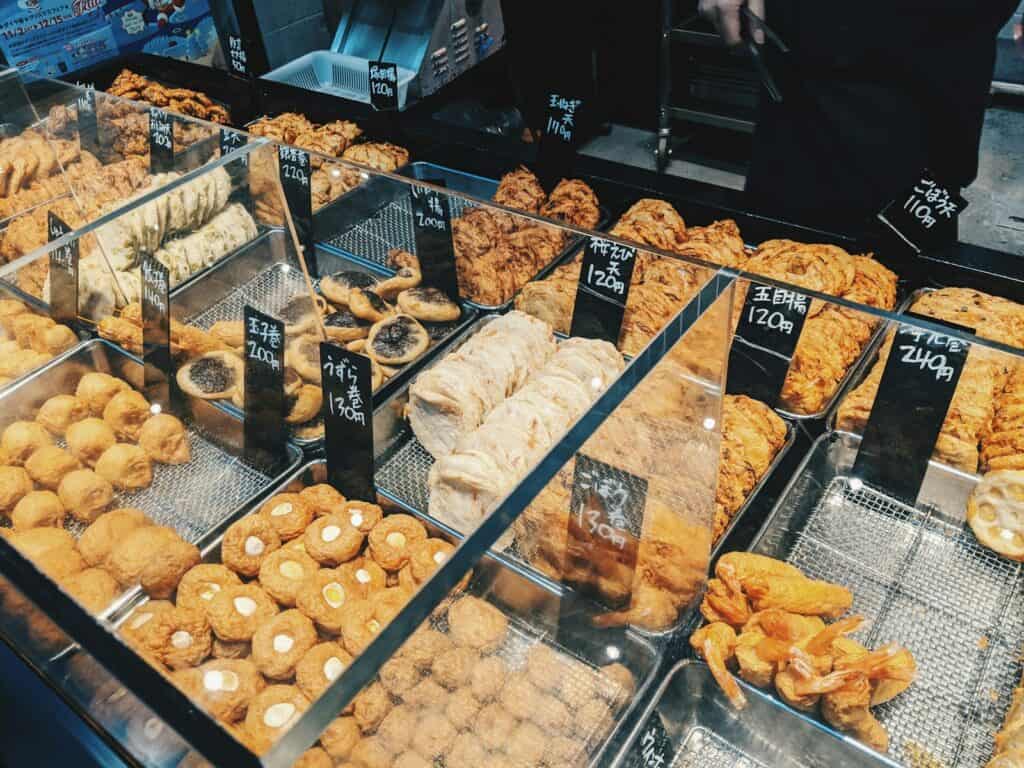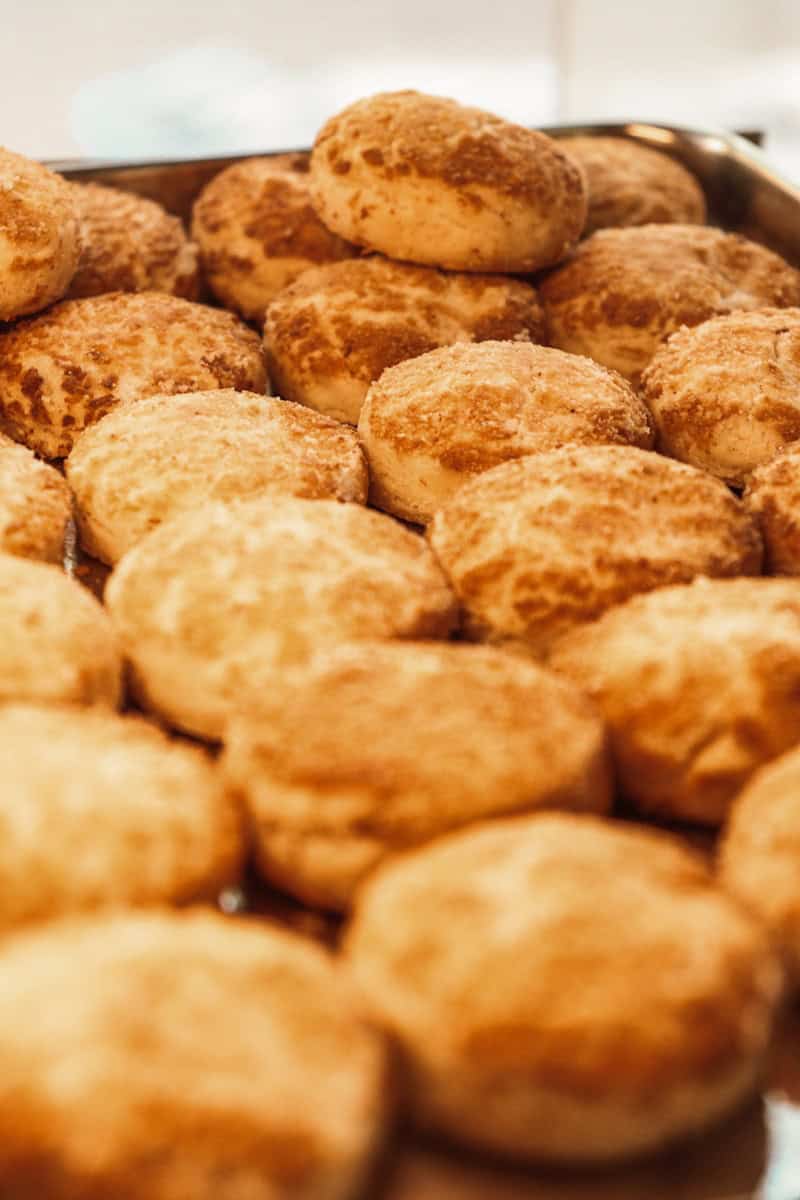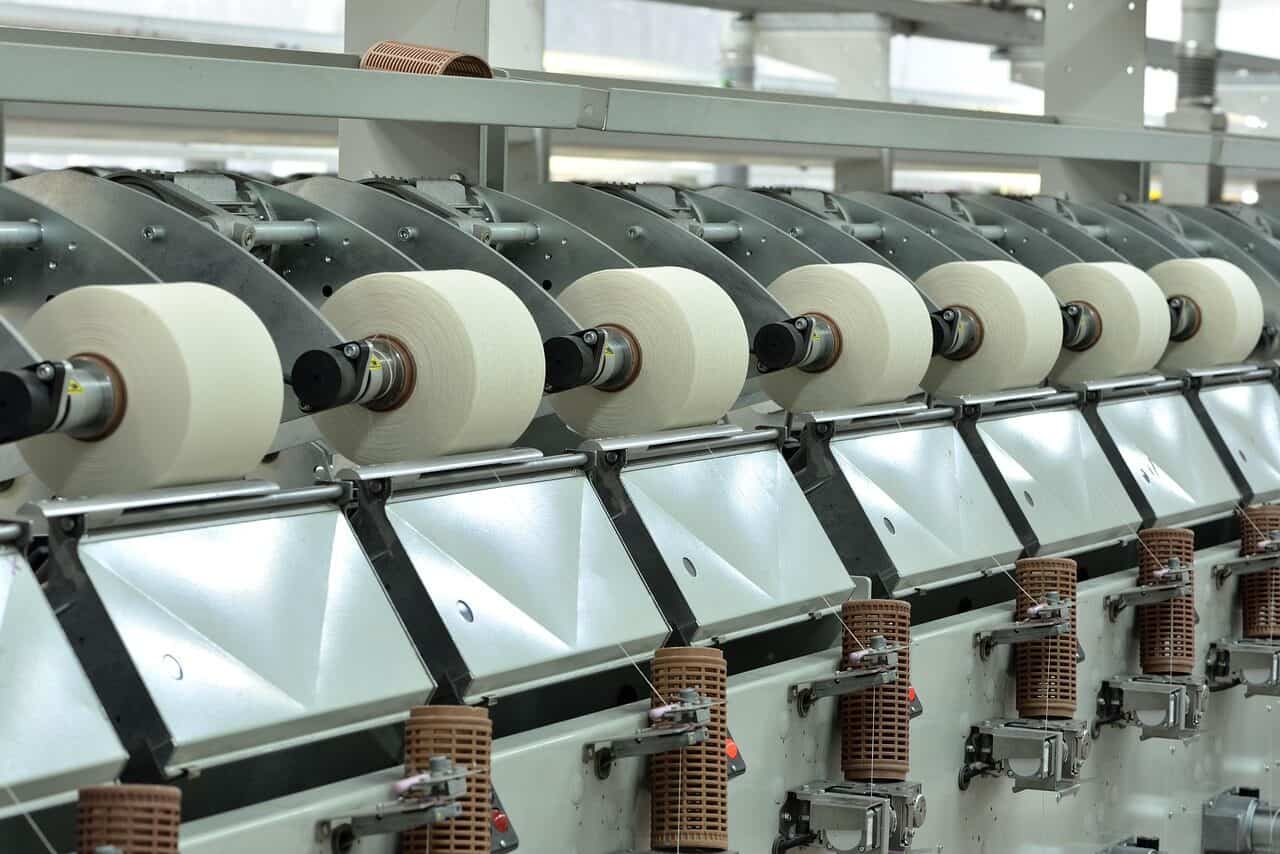Глобальные тенденции индустрии печенья 2025: Рост рынка, потребительские предпочтения, тенденции рынка печенья
Понимание меняющегося ландшафта
Мировой рынок печенья является ключевой частью индустрии закусок и демонстрирует удивительную силу и энергию. Это вовсе не скучная, неизменная категория. Напротив, она полна новых идей, постоянно меняется в соответствии с пожеланиями покупателей и новыми технологическими достижениями. В этом отчете подробно рассматриваются важные факторы, определяющие направление развития отрасли к 2025 году. Мы проанализируем, насколько сильно растет рынок, подробно рассмотрим изменения в поведении потребителей и технологические изменения, которые меняют индустрию от производства продуктов до их покупки. Основными тенденциями, определяющими эти изменения, являются серьезный сдвиг в сторону заботы о здоровье, одновременный рост премиальных и роскошных товаров, а также широкое использование устойчивых и чистых практик во всей бизнес-цепочке. Понимание этих взаимосвязанных тем важно для любого профессионала, работающего над будущим индустрии печенья.
Обзор мирового рынка 2024
Размер рынка и прогнозы на будущее
Чтобы понять будущее, нужно сначала оценить, что происходит сейчас. По состоянию на 2024 год мировой рынок печенья является сильным игроком в секторе продуктов питания и напитков и оценивается примерно в 120 миллиардов долларов США. Согласно отраслевым исследованиям таких источников, как Mordor Intelligence и Statista, рынок готов к активному росту. Прогнозы показывают среднегодовой темп роста (CAGR) от 4,5% до 5,5% в период 2024-2029 годов, что свидетельствует о постоянном потребительском спросе и больших возможностях для роста.
Этот рост не одинаков для всех типов. Рынок состоит из разных секций, и в каждой из них наблюдаются разные показатели.
- По типу продукта: Лидером рынка является сладкое печенье, которое включает в себя печенье, печенье с начинкой и вафли. На этот раздел приходится более 60% от общей доли рынка, что обусловлено всеобщей любовью к лакомствам. Однако соленое печенье, включая крекеры и сухарики, растет быстрее, чему способствуют более здоровый выбор перекусов и возможность сочетания с различными блюдами.
- По каналам сбыта: Супермаркеты и крупные магазины остаются основным каналом продаж, используя свой широкий охват и пространство полок. Удобные магазины привлекают покупателей на ходу, а специализированные магазины обслуживают специфические и премиальные группы. Однако наиболее активные изменения происходят в онлайн-ритейле. Платформы электронной коммерции и модели "прямого контакта с потребителем" (D2C) демонстрируют самый быстрый рост - тенденция, которой способствовала пандемия, а теперь еще и изменение покупательских привычек.
Драйверы роста и проблемы
Путь рынка определяется балансом мощных драйверов роста и серьезных проблем.
Драйверы роста
- Рост расходов, особенно в развивающихся странах Азиатско-Тихоокеанского региона и Латинской Америки, расширяет круг потребителей, имеющих средства для покупки необязательных закусок.
- Глобальная тенденция к удобству и перекусам на ходу делает печенье идеальным решением для занятого образа жизни.
- Постоянные инновации во вкусах, форматах и рецептах продуктов делают эту категорию интересной и актуальной для современных потребителей.
- Расширение инфраструктуры организованной розничной торговли и электронной коммерции улучшает доступность и наличие товаров по всему миру.
Вызовы
- Острая конкуренция со стороны как признанных глобальных игроков, так и гибких местных брендов создает значительное давление на цены и прибыль.
- Изменения цен на основные виды сырья, такие как пшеница, сахар и какао, могут напрямую влиять на себестоимость и прибыль.
- Растущая озабоченность потребителей высоким содержанием сахара, жира и калорий в традиционном печенье представляет собой серьезную проблему для старых продуктов.
- Растущая сложность глобальных цепочки поставок делает отрасль уязвимы к сбоям в работе, начиная от политических событий и заканчивая последствиями для сельского хозяйства, связанными с климатом.
Таблица 1: Обзор мирового рынка печенья
В этой таблице собраны основные показатели рынка, позволяющие быстро получить представление о текущем состоянии отрасли и ее ближайшем потенциале.
| Метрика | Точка данных / анализ | Источник Год |
| Стоимость мирового рынка | Около 120 миллиардов долларов США | 2024 |
| Прогнозируемый CAGR | 4.5% – 5.5% (2024-2029) | 2024 |
| Крупнейший сегмент | Сладкое печенье - на него приходится более 60% доли рынка. | 2023 |
| Самый быстрорастущий канал | Онлайн-ритейл - подпитывается моделями D2C и ростом платформ электронной коммерции. | 2024 |
Изменение потребительских предпочтений
Современный потребитель - самая мощная сила, меняющая рынок печенья. Их предпочтения, все больше ориентированные на здоровье, хорошее самочувствие и осознанное потребление, заставляют производителей полностью переосмыслить рецептуру продукции, поиск ингредиентов и позиционирование бренда. В этом разделе рассматриваются конкретные тенденции поведения, определяющие инновации в отрасли.
Революция "Лучше для вас
Спрос на продукты "лучше для вас" - это уже не просто небольшой рынок, это - главная тенденция. Эта революция затрагивает многие области, влияя на каждый аспект разработки печенья. Основное внимание уделяется тому, что убирается или сокращается. Глобальная борьба с чрезмерным потреблением сахара, усиленная введением налогов на сахар в разных странах и повышением осведомленности потребителей, сделала варианты с пониженным содержанием сахара и калорий приоритетными. Бренды активно меняют классические рецепты, чтобы снизить содержание сахара без ущерба для вкуса, часто используя натуральные подсластители, такие как стевия и монк-фрукт.
Помимо уменьшения количества ингредиентов, наблюдается активное стремление к их добавлению. Функциональные ингредиенты превращают печенье из простого лакомства в средство для улучшения питания. Мы наблюдаем резкий рост продуктов, усиленных ингредиентами, которые приносят реальную пользу здоровью. Печенье с высоким содержанием белка привлекает потребителей, занимающихся фитнесом, а варианты с высоким содержанием клетчатки - тех, кто стремится улучшить состояние пищеварения. Все чаще в состав печенья включают витамины, минералы и даже пробиотики, что позволяет позиционировать эти закуски как часть сбалансированной диеты.
Кроме того, огромную популярность приобрело движение "чистой этикетки". Если посмотреть на данные опросов потребителей, то можно заметить, что они отдают предпочтение коротким и понятным спискам ингредиентов. Это привело к повсеместному отказу от искусственных добавок, консервантов, красителей и ароматизаторов. Потребители хотят знать, что они едят, и бренды, обеспечивающие такую прозрачность, вызывают доверие и лояльность.
Группы диет и образ жизни
Универсальный подход к ассортименту печенья устарел. Рынок все больше делится на "диетические племена", каждое из которых имеет свои специфические потребности и готово платить за продукты, которые их удовлетворяют. Это привело к появлению прибыльных и быстрорастущих специализированных рынков.
Сегмент безглютеновых продуктов, когда-то являвшийся медицинской необходимостью для людей с целиакией, превратился в выбор образа жизни для многих потребителей, которые считают его более здоровым вариантом. Это привело к появлению альтернативных видов муки: миндальная, кокосовая, овсяная и нутовая мука стали часто использоваться при выпуске новых продуктов.
Движение веганов и вегетарианцев также оказывает большое влияние. Проблема замены основных ингредиентов, таких как молочное масло и яйца, была решена с помощью замечательных инноваций. Производители теперь умеют использовать растительные жиры, овсяное молоко и связующие вещества, такие как льняные яйца, для создания высококачественного веганского печенья, которое понравится как преданным веганам, так и "гибким" потребителям. Еще один быстрорастущий сегмент - кето-дружественное печенье с очень низким содержанием углеводов и высоким содержанием жиров, предназначенное для популярной кетогенной диеты. Успешными являются те бренды, которые разрабатывают специализированные, высокоэффективные линейки продуктов для этих конкретных групп потребителей, а не предлагают один-единственный символический продукт.
Премиальные товары и роскошь
Удивительно, но наряду с мощным трендом здоровья и хорошего самочувствия наблюдается столь же сильное движение в сторону роскоши премиум-класса. Потребители не утратили желания полакомиться чем-нибудь вкусненьким; скорее, изменилось их определение того, что является достойной роскошью. Они все чаще готовы платить больше за печенье, которое предлагает превосходные вкусовые ощущения, высококачественные ингредиенты и убедительную историю бренда. Это и есть концепция "доступной роскоши", когда небольшое, превосходное лакомство доставляет минутное удовольствие.
Эта тенденция характеризуется использованием ремесленных методов производства, экзотических и высококачественных ингредиентов (например, шоколад одного происхождения, мадагаскарская ваниль) и сложных вкусовых сочетаний, таких как карамель с морской солью, шоколад с чили или лаванда и лимон. Важную роль играет упаковка, элегантный и простой дизайн которой говорит о качестве и мастерстве.
В связи с этим возникло удивительное противоречие: "здоровая роскошь". Это пространство, где премиальные, высококачественные и часто "чистые" ингредиенты рассматриваются как оправданный и более здоровый способ побаловать себя. Печенье, приготовленное из органической цельнозерновой муки, темного шоколада и нерафинированного кокосового сахара, воспринимается не просто как лакомство, а как лучшее лакомство, преодолевающее разрыв между стремлением потребителя к здоровью и удовольствию.
Таблица 2: Основные тенденции в области здоровья потребителей, влияющие на разработку рецептов печенья
В этой таблице приведено краткое описание того, как наиболее влиятельные запросы потребителей в области здравоохранения непосредственно воплощаются в практические действия. стратегии развития продукции для производителей печенья.
| Потребительские тенденции | Описание | Влияние на разработку продукта |
| Чистая этикетка | Спрос на простые, узнаваемые и натуральные ингредиенты. | Исключение искусственных красителей, ароматизаторов и консервантов. Использование натуральных подсластителей. |
| Функциональные продукты питания | Стремление к продуктам, которые приносят пользу не только для здоровья. | Укрепление белком, клетчаткой, витаминами и минералами. Включение адаптогенов. |
| Растительный/вегетарианский | Отказ от продуктов животного происхождения по этическим соображениям или по состоянию здоровья. | Замените молочное масло и яйца растительными альтернативами (например, овсяным молоком, льняными яйцами). |
| Уменьшенный сахар | Активные усилия по снижению потребления сахара из-за проблем со здоровьем, таких как диабет. | Использование альтернативных подсластителей (стевия, монк-фрукт) и изменение рецептов для снижения содержания сахара. |
Глубокий взгляд на региональный рынок
Глобальный рынок печенья - это не единое целое, он состоит из различных региональных рынков, каждый из которых имеет свои уникальные характеристики, пути развития и потребительские предпочтения. Детальный географический анализ необходим любому предприятию, стремящемуся разработать эффективную международную стратегию, определить инвестиционные точки или спланировать выход на рынок.
Двигатель роста Азиатско-Тихоокеанского региона
Азиатско-Тихоокеанский регион (АТР) является явным двигателем мирового рынка печенья, занимая самую большую долю рынка (около 40%) и демонстрируя самые высокие темпы роста. Это лидерство обусловлено несколькими взаимосвязанными факторами. Во-первых, огромные размеры потребительской базы в таких странах, как Китай и Индия, обеспечивают огромную взлетную полосу для роста. Во-вторых, быстро растущие расходы и ускоряющийся рост городов меняют привычки питания, и фасованные закуски, такие как печенье, становятся важной частью повседневной жизни.
Динамика рынка в АТР живая и разнообразная. В Китае, занимающем значительную долю регионального рынка, растет спрос на продукцию премиум-класса и продукцию, ориентированную на здоровье, что отражает западные тенденции. В Индии, стране с одним из самых высоких уровней потребления печенья на душу населения, рост обусловлен как доступностью продукции на сельских рынках, так и премиальными продуктами в городских центрах. Ключевым фактором успеха в этом регионе является способность внедрять инновации, смешивая местные ароматы, такие как матча в Японии или кардамон и масала в Индии, с традиционными форматами печенья, создавая продукты, которые глубоко соответствуют местным вкусам. Темпы роста на уровне стран в Индии и Китае постоянно опережают среднемировые, что делает их приоритетными объектами для расширения.
Европа: Зрелый рынок
В отличие от роста объемов в АТР, европейский рынок характеризуется зрелостью. При доле рынка около 25% рост здесь в меньшей степени обусловлен увеличением потребления и в большей - инновациями с добавленной стоимостью. Европейские потребители очень разборчивы и придают большое значение качеству, происхождению и экологичности продукции.
Основными тенденциями в Европе являются здоровье, здоровый образ жизни и этичное производство. Особенно высок спрос на органическое печенье, не содержащее ГМО и изготовленное из экологически чистых ингредиентов. Тренд "чистой этикетки", пожалуй, наиболее развит здесь: потребители внимательно читают упаковку на предмет наличия сертификатов и прозрачных списков ингредиентов. В то время как традиционные форматы, такие как дижестивное печенье, шортбред и бискотти, сохраняют свою популярность, пространство на полках, отведенное для функциональных, безглютеновых и низкосахарных альтернатив, стремительно расширяется. Для достижения успеха в Европе требуется сложный подход к разработке продукции, ориентированный на премиальные характеристики и сочетающийся с твердой приверженностью принципам здоровья и устойчивого развития.
Конкурентный ландшафт Северной Америки
То Североамериканский рынокНа долю этого региона приходится около 20% от общемировой доли, и его можно охарактеризовать как высокоразвитый, высококонкурентный и быстроразвивающийся. Инновации - это ключ к выживанию и росту в условиях, когда на рынке присутствуют мировые гиганты и проворные стартапы.
В этом регионе преобладают три ключевые тенденции. Первая - это бурное развитие здоровых закусок. Североамериканские потребители находятся в авангарде перехода на функциональные продукты питания, и проход для печенья отражает это, предлагая огромное количество вариантов с высоким содержанием белка, клетчатки и кето-питания. Во-вторых, удобство - это самое главное. Форматы "на ходу", упаковки для разового употребления и герметичные упаковки играют решающую роль в привлечении занятых потребителей. В-третьих, бренды с частной этикеткой стали мощной силой. Такие ритейлеры, как Costco, Trader Joe's и Whole Foods, разработали сложные линии печенья под частной маркой, которые часто являются лидерами инноваций и напрямую конкурируют с известными национальными брендами как по качеству, так и по цене. Чтобы добиться успеха, бренды должны предлагать четкие отличия, будь то уникальные функциональные преимущества, новые вкусы или захватывающая история бренда.
Таблица 3: Обзор роста регионального рынка печенья
В этой таблице представлено сравнение основных региональных рынков, выделены их ключевые характеристики и основные тенденции для стратегического планирования.
| Регион | Размер рынка (прибл. доля) | Основные факторы роста | Основные тенденции |
| Азиатско-Тихоокеанский регион | ~40% | Рост расходов, рост городов | Культура закусок, интеграция местных вкусов |
| Европа | ~25% | Инновации, продукты премиум-класса | Здоровье и здоровье, устойчивое развитие, органические продукты |
| Северная Америка | ~20% | Удобство, здоровые закуски | Функциональные ингредиенты, на растительной основе, частная марка |
| Остальной мир | ~15% | Развивающиеся экономики, рост проникновения розничной торговли | Доступность, базовое питание |
Технологии и инновации
Технологии больше не являются побочной вспомогательной функцией в индустрии печенья; они - основной фактор эффективности, инноваций и конкурентных преимуществ. От заводского цеха до входной двери потребителя цифровые преобразования меняют всю цепочку создания стоимости, позволяя Производители могут выпускать более качественную продукцию с большей эффективностью и общаться со своими клиентами совершенно новыми способами.
Умное производство и искусственный интеллект
То современная фабрика печенья быстро превращается в "умную" фабрику. Интеграция искусственного интеллекта (ИИ) и Интернета вещей (IoT) революционизирует производство. Например, системы визуального контроля на базе ИИ могут контролировать производственные линии в режиме реального времени, выявляя проблемы с размером, цветом или формой печенья с точностью и скоростью, превосходящими человеческие способности. Это обеспечивает непревзойденную постоянство и качество продукции контроль.
В то же время датчики IoT, встроенные в хлебопекарные печи, миксеры и упаковочное оборудование, собирают огромное количество оперативных данных. Эти данные поступают в алгоритмы предиктивного обслуживания, которые могут предвидеть поломки оборудования еще до их возникновения, сводя к минимуму дорогостоящие простои и перебои в производстве. На этапе упаковки робототехника и автоматизация выполняют повторяющиеся задачи со скоростью и точностью, начиная от подбора и размещения печенья и заканчивая упаковкой и размещением на паллетах. Совокупный эффект этих технологий - резкое повышение эффективности производства, значительное сокращение пищевых и материальных отходов, а также неизменно высокое качество конечного продукта.
Цифровая цепочка поставок
Влияние технологий выходит далеко за пределы заводских стен, изменяя логистику, планирование и доверие потребителей. Мы наблюдаем появление полностью цифровой цепочки поставок. Одно из самых многообещающих применений - использование блокчейна для отслеживания. Для потребителя, покупающего печенье премиум-класса, продаваемое как "органическое" или "полученное из экологически чистых источников", блокчейн может обеспечить неизменную, проверяемую запись о пути продукта. Он позволяет отследить ингредиенты, такие как какао или пальмовое масло, до конкретной фермы, подтверждая маркетинговые заявления и создавая мощный фундамент доверия потребителей. Эта технология напрямую связана с тенденцией "чистой этикетки", обеспечивая полную прозрачность.
Кроме того, предиктивная аналитика меняет методы управления запасами и спросом. Анализируя огромные массивы данных, включая исторические продажи, погодные условия, тенденции в социальных сетях и данные ритейлеров, компании теперь могут прогнозировать спрос с гораздо большей точностью. Это очень важно для продуктов с определенным сроком годности, таких как печенье. Оптимизированное прогнозирование ведет к более эффективному управлению запасами, снижая риск возникновения дефицита и порчи товара, тем самым сохраняя прибыль и повышая устойчивость.
Электронная коммерция и D2C
Пожалуй, наиболее заметный технологический сдвиг произошел в сфере дистрибуции. Развитие электронной коммерции коренным образом изменило то, как потребители покупают печенье. Однако наиболее разрушительной тенденцией в рамках этого сдвига является рост моделей "прямого контакта с потребителем" (D2C). Запуская собственные сайты D2C, бренды печенья могут обойти традиционных розничных посредников и установить прямые отношения с конечными потребителями.
Эта модель обладает несколькими основными преимуществами. Она дает брендам полный контроль над презентацией бренда и клиентским опытом. Что еще более важно, она предоставляет доступ к бесценным данным от первого лица о предпочтениях, покупательских привычках и отзывах клиентов. Эти данные - золотая жила для разработки продуктов и персонализированного маркетинга. Каналы D2C также позволяют использовать инновационные бизнес-модели, такие как подписные коробки, которые ежемесячно доставляют новые и эксклюзивные вкусы постоянным клиентам. Как показывает наш опыт наблюдения за сменой каналов розничной торговли, бренды, которые успешно развивают присутствие в D2C, не просто открывают новый канал продаж; они создают сообщество и мощный цикл обратной связи, основанный на данных.
Стратегические перспективы до 2025 года
Если свести воедино данные о рынке, потребительские тенденции и технологические сдвиги, то вырисовывается четкая картина стратегических требований для достижения успеха на рынке печенья в период до 2025 года и далее. Ландшафт становится все более сложным, но и более богатым на возможности для брендов, которые готовы адаптироваться. Будущее будет определяться гибкостью, прозрачностью и глубоким пониманием современного потребителя.
Столпы будущего успеха
Чтобы процветать в этой развивающейся среде, лидеры индустрии должны строить свои стратегии на трех основных принципах. Овладение этими направлениями станет ключевым различием между брендами, лидирующими на рынке, и теми, кто остался позади.
- Гибкие инновации: Темпы изменения потребительских предпочтений ускоряются. Успех будет зависеть от способности быстро разрабатывать, тестировать и запускать новые продукты, которые напрямую отвечают возникающим тенденциям в области здоровья, вкуса и образа жизни. Это требует гибкого процесса исследований и разработок и корпоративной культуры, поощряющей эксперименты.
- Интеграция технологий: Внедрение технологий больше не является чем-то необязательным. Лидеры будут использовать ИИ, IoT и аналитику данных для создания сверхэффективных производственных процессов, сокращающих количество отходов. Они будут использовать такие инструменты, как блокчейн, чтобы обеспечить прозрачность цепочки поставок, которую сегодня требуют потребители.
- Ориентация на потребителя: Наиболее успешными будут те бренды, которые установят глубокую, подлинную связь со своими потребителями. Это означает выход за рамки транзакционных отношений и создание брендов, которые связаны с современными ценностями, в частности с устойчивым развитием, здоровым образом жизни и этичным подбором поставщиков. Это означает, что нужно прислушиваться к потребителям, напрямую взаимодействовать с ними и отражать их ценности в каждом продукте и общении.
Заключение: Продолжительная привлекательность
Рынок печенья находится в состоянии серьезной трансформации. Простое печенье или крекер прошлого превращается в сложный продукт, который находится на пересечении удовольствия, здоровья и технологий. Однако при всех этих изменениях основная привлекательность этой категории остается неизменной. Желание человека перекусить удобно, сытно и комфортно не подвластно времени. Инновации в индустрии, предлагающие более здоровые рецепты, более интересные вкусы и более прозрачное производство, обеспечивают печенью постоянную актуальность и рост в современном мире. Дорога к 2025 году - это путь динамичных перемен, но он ведет в будущее, где простое печенье будет актуально как никогда.
- Международные тенденции в потребительской и пищевой промышленности - Служба экономических исследований Министерства сельского хозяйства США https://www.ers.usda.gov/topics/international-markets-us-trade/international-consumer-and-food-industry-trends
- Продовольствие - Прогноз мирового рынка - Statista https://www.statista.com/outlook/cmo/food/worldwide
- Ведущие тенденции в пищевой промышленности 2025 года - Innova Market Insights https://www.innovamarketinsights.com/trends/top-food-trends-2025/
- Обзор индустрии продуктов питания и напитков - Mintel https://www.mintel.com/insights/food-and-drink/
- Исследование рынка продуктов питания и напитков - MarketsandMarkets https://www.marketsandmarkets.com/food-and-beverages-market-research-6.html
- Отчет о рынке продуктов для здоровья и оздоровления - Grand View Research https://www.grandviewresearch.com/industry-analysis/health-wellness-foods-market-report
- Принятие потребителями функциональных продуктов питания - PMC (NIH) https://pmc.ncbi.nlm.nih.gov/articles/PMC8835010/
- Анализ индустрии продовольствия и питания - Euromonitor https://www.euromonitor.com/insights/food-and-nutrition
- Проект "Чистая этикетка https://cleanlabelproject.org/
- Глобальные потребительские тенденции 2026 года - Innova Market Insights https://www.innovamarketinsights.com/trends/global-consumer-trends-2026/












